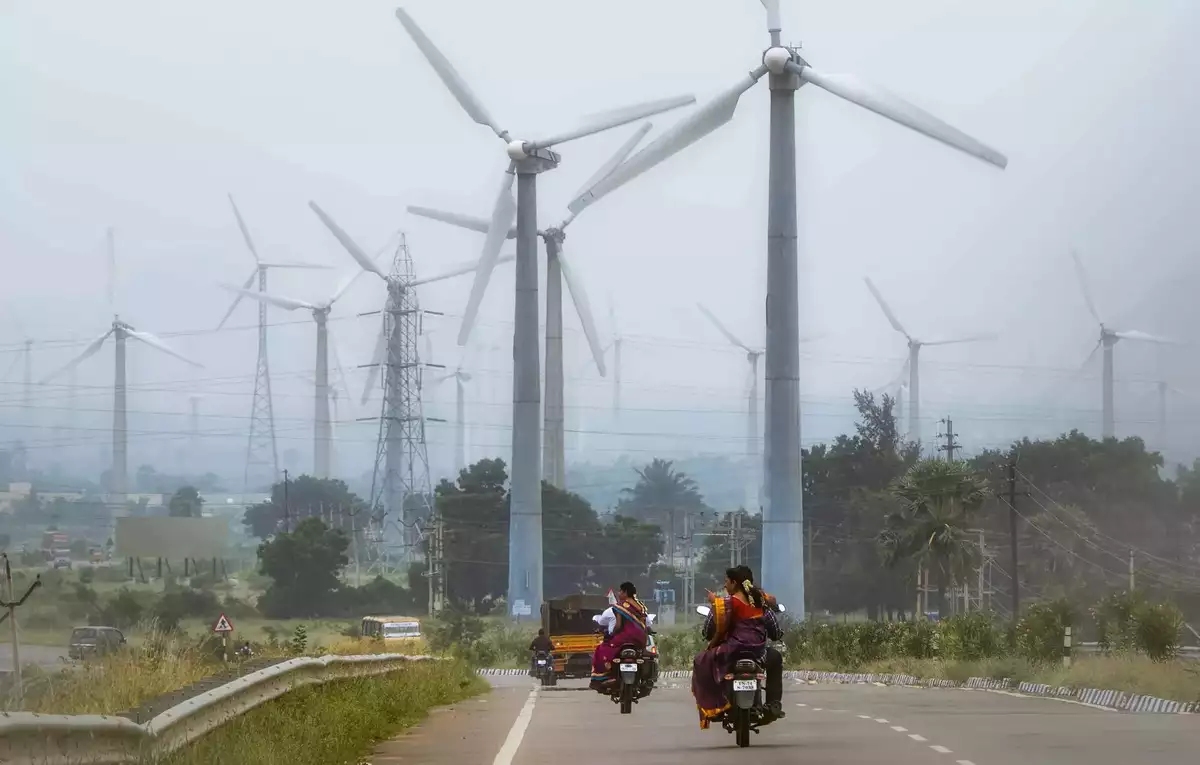India–US Trade Tensions Rise Over Steel and Auto Tariffs NMDC Limited reports a 38% drop in Q4 FY24 consolidated net profit RINL to Raise $23 Million Through Land Sales Amid Crisis

India's electricity policy is at a crossroads, with advocates increasingly considering carbon capture and storage (CCS) as a solution. However, decades of reliance on CCS have brought minimal results elsewhere, raising doubts about its practicality in India.
Despite years of promotion, carbon capture and storage (CCS) technology has failed to deliver on its promises. This technology, also known as carbon capture and storage, intends to extract CO2 from smokestacks and inject it deep underground. However, the number of running CCS facilities remains low, underscoring the difficulties of widespread implementation. Niti Aayog, the government think tank in India, has suggested employing CCS to absorb as much as 70% of the nation's emissions from the power industry. However, given the previous failures and limitations of CCS technology, such lofty goals may be wishful thinking.
That sounds like the phrase China used to describe its energy strategy 15 years ago, but the technological revolution has opened up new, cheaper, and cleaner options. India would benefit from following such an approach.
Challenges of CCS Implementation:
If CCS is to work anywhere, it must meet two difficult requirements. First, sufficient subsurface reservoirs must store the waste gas created. Second, fossil fuel prices plus the cost of CCS have to be less expensive than any other technology. India fails to meet both criteria.
Take the reservoirs first. Oilfields use more than 80% of the carbon dioxide pumped underground on a commercial scale globally. Forcing gas into petroleum reserves is a long-standing process for bringing more crude to the surface, generating a revenue stream to help pay for the significant capture and storage costs.
However, India is severely depleted of domestic oilfields. Petroleum reserves hold only 2.6 billion metric tonnes of the country's projected 359 billion tonnes of carbon storage capability, or enough to store just one year's worth of emissions. This takes us back to the second challenging CCS condition: cost. Adding carbon to subterranean salty water reserves is the most practical use of that 359 billion-tonne capacity. That technology is only functional when there is a credible and strictly enforced carbon price. There is no hint that India is making such a promise.
Alternative Energy Solutions:
The winners of this race are technologies that Beijing has been promoting hard for nearly a generation. According to BloombergNEF, wind and solar are already less expensive than new coal generation in India, and adding a four-hour battery to ensure power is available after sunset reduces their cost to less than coal with CO2.
Hydroelectricity is yet another underutilised resource. Similar to China, India gains from being next to the world's largest supply of river power—the swiftly flowing Himalayan waterways. While China has been so busy developing this resource that dam construction is nearing its geological limits, India has ignored it. More than 17 gigawatts of projects have been cancelled due to bureaucratic snarls and local opposition. The nation's hydroelectric capacity is now only at 29%, with an additional 10% being built. Raising that ratio would control the flooding that periodically destroys rural regions and supply India's cities with terawatt-hours of electricity.
The situation is similar with atomic power, as the government intends to reach approximately the producing capacity by 2031. It is unlikely to meet more than two-thirds of that goal, having linked only two reactors in the last decade, compared to 35 in China.
Policy Imperatives:
The problem Niti Aayog is attempting to solve is genuine. India's energy consumption is increasing at an incredible rate, with peak levels going from 130 gigawatts in 2014 (about the amount of Spain's generation capacity) to 230 GW last year and up to 400 GW by 2030, which is equivalent to powering all of Japan and Taiwan's combined power plants.
The solution, however, is to be realistic about India's benefits and disadvantages. The country is endowed with abundant solar and wind power, and New Delhi's long-term policies recognise their potential.
As per the most recent 10-year plan that was declared last month, the National Electricity Authority anticipates that the yearly growth in fossil-fired production would be approximately 162 terawatt-hours over the next ten years, which is approximately the same amount that has been observed in the last two years alone. This will bring power sector emissions well within reach of the peak and subsequent reduction that the globe and India's scorching people sorely require.
However, achieving the nation's consistently failed goals for zero-carbon power is necessary. Coal will make up the difference if renewable energy sources are insufficient, either with or, more likely, without CCS. India should not rely on impractical and untested new technology to contain pollution; instead, it should provide zero-carbon developers with the assurance and legislative support they need to prevent all that soot from burning in the first place. The most effective method to decarbonise the coal sector is to bury the industry as a whole, not just its emissions.
Also Read : Empowering India through solar energy: Comprehensive analysis of PM Suryodaya Yojana Qatar's Gas Gamble: Charting a Course for India's Energy Security